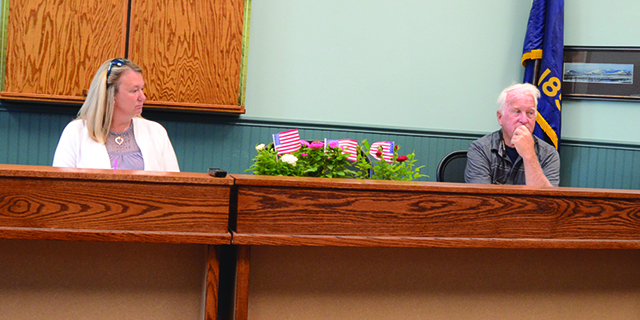CDC votes to recommend booster shots, mix-and-match vaccinations
Published 11:00 am Saturday, October 23, 2021

- A nurse administers a COVID-19 vaccine to a student at Eastern Oregon University in this file shot from May 2021. State health officials are urging Oregon residents to get vaccinated to protect themselves against an expected surge of respiratory infections in the months ahead.
LA GRANDE — The Centers for Disease Control and Prevention met virtually on Thursday, Oct. 21, and debated what guidelines will be in place regarding who gets priority in receiving the booster shots, and whether Americans even need the vaccine.
With unanimous consent, the organization voted to recommend booster shots to Americans in the fight against COVID-19, even as data on booster doses — and especially mix-and-match boosters — was limited.
That recommendation now goes up the CDC chain of command for final approval before it becomes the agency’s official recommendation to the public.
The CDC, under the FDA Emergency Use Authorization, recommended the use of booster shots for those who received the Moderna vaccine more than six months ago and belong to risk categories such as those 65 years of age and older, or those 18 through 64 years of age at high risk of severe COVID-19 or with frequent institutional or occupational exposure to SARS-CoV-2.
Similarly, the CDC recommended that individuals 18 years of age and older who received the Johnson & Johnson vaccine could get a booster at least two months after the initial dose.
As well, the FDA approved mix and matching — giving out vaccines from different manufacturers.
“Certainly, from my point of view, I really appreciated that we were finally able to look at, consider, and recommend a mix-and-match approach as part of our way to boost people’s immunity, especially for the people who need it,” said Dr. Wilbur Chen, professor of medicine at the University of Maryland during the meeting’s closing statements.
The panel heard testimony and findings from several experts in the field about the efficacy of booster shots. Studies show that the efficacy of both the Moderna and Pfizer vaccines wane over time, prompting questions about instituting a third dose to help wake up the immune system and keep it alert to COVID-19 infections.
Data presented by experts showed that the vaccine boosters provided additional immunity to COVID-19 on top of the immunity received in the one- and two-shot series. The Johnson & Johnson vaccine, in particular, benefited dramatically from the booster shot, showing a nearly 94% efficacy rate as compared to its far lower initial rate of 71% against COVID-19 hospitalizations, bringing it in line with the Pfizer and Moderna offerings.
“Vaccines don’t save lives, but vaccinations do,” Dr. Grace Lee, chair of the Advisory Committee on Immunization Practices, said during the meeting. “Our recommendations are one step of the way, but it’s going to be so important, as everyone mentioned, that in our implementation, patients are truly educated about the benefit-risk balance based on their own personal situation.”
The CDC panel also weighed data regarding the risk of vaccines — with contributing experts citing a growing number of reports about rare systemic side effects of vaccination such as Guillain-Barre syndrome, blood clots and myocarditis — an inflammation of the muscle.
The panel, which voted on Oct. 21, spent considerable time going over rates of myocarditis and pericarditis symptoms following a second dose of Moderna and Pfizer vaccines, particularly among young males who received the mRNA vaccines.
Dr. John R. Su, a member of ACIP, noted that the incidents of symptoms of myocarditis were higher than background incidences of the self-same symptom, but that the incidence rate was approximately 1 in 1 million for developing symptoms, which could affect up to 100 per 1,000,000 in young males. The experts further noted that 77% of patients recovered from their symptoms.
An NIH study cited in the presentation stated that mix-and-match booster shots showed no increase in risk compared to instances when vaccines of the same type were given. Those risks of myocarditis and Guillain-Barre syndrome were statistically insignificant when compared to using the same vaccine for both doses.
Experts who spoke to the panel noted that the public should be aware of the risks and benefits associated with the vaccine.
Second doses of the Johnson & Johnson vaccine, which had previously been stopped due to a rare blood clotting disorder, showed a significantly smaller prevalence rate of clots following a second dose. Incident rates of blood clots stood at 15.1 cases per million following the first dose and 1.9 cases per million after the second.
The panel heard data that showed that vaccine boosters from Moderna and Pfizer-BioNTech produced the highest levels of immunity, while the Johnson & Johnson booster provided the least amount of protection.
Vaccines are available at no cost at several locations. Specific locations for vaccines can be found at www.vaccines.gov/search or via your local pharmacy.









